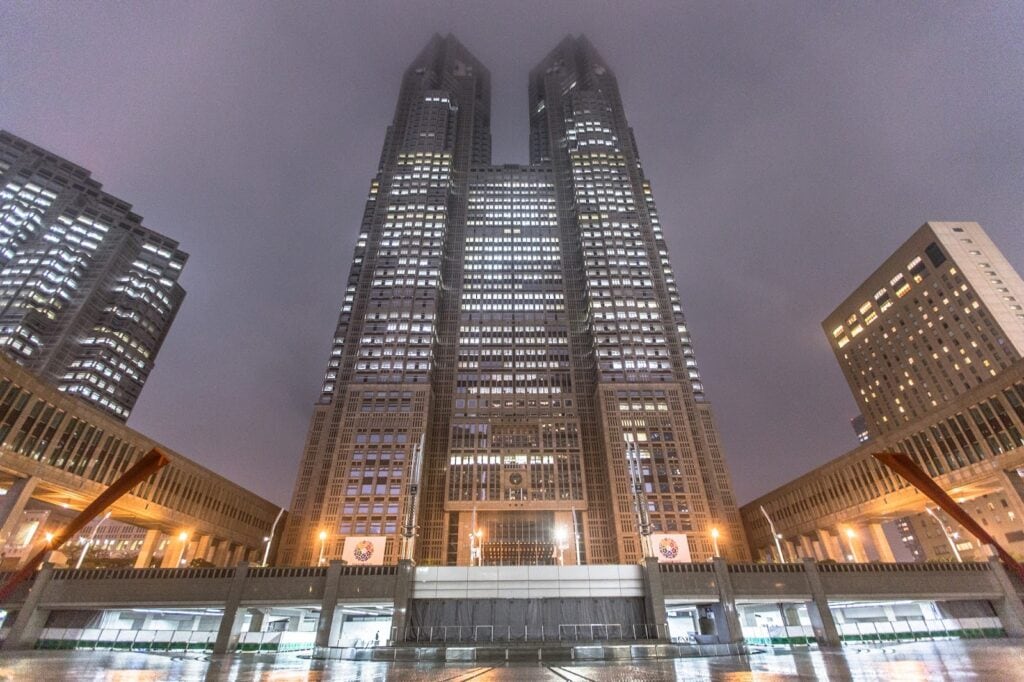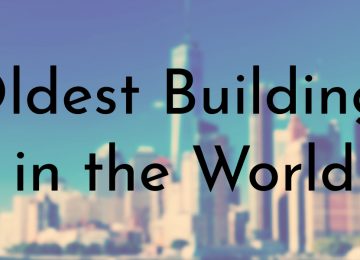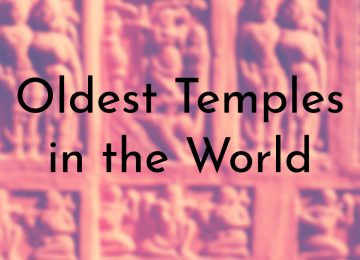Long-standing architectural structures are a great resource for knowing more about a time way before us. Buildings tell stories of people before us. Such buildings have a life on their own. They have survived many catastrophes.
When we think of Tokyo, we often think of skyscrapers and modern-looking buildings. But Tokyo is home to historic buildings dating back to centuries. A few historic buildings have survived huge earthquakes and even firebombs of World War II.
Exploring these buildings, from the extravagant Edo period decor to minimal Meiji era buildings, is a treat for history buffs and those looking for an authentic old Tokyo experience.
So, here are the 10 oldest buildings in Tokyo.
10. Tokyo Metropolitan Government Building (1991)
Year Built: 1991
Architecture Type: Modern Skyscraper Towers
Still Used?: Yes, actively
This is a pair of towers that is the housing administration for the Tokyo Metropolis region. Tokyo Metropolitan Government Building was designed by the famous Japanese architect Kenzo Tange using anti-seismic innovations. The major defining feature of this building and the whole Shinjuku district is the 243-meter-tall twin structures.
There are two observation decks on the upper floors that provide great views of the mega city.
Did you know?
The building has one of the world’s fastest elevators, traveling at 10 meters per second.
9. Imperial Palace (1968)
Year Built: 1968
Architecture Type: Modernist Buildings
Still Used?: Yes, by Japan’s Imperial Family
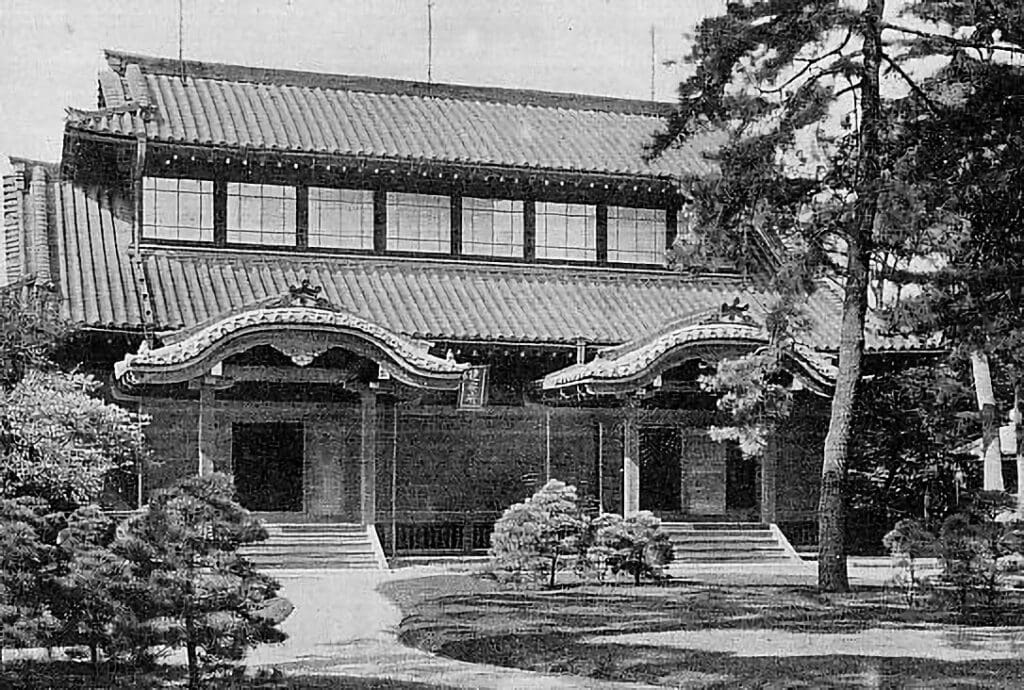
The imperial palace was originally the site of feudal Edo Castle during the start of the Edo period, starting in the 1590s CE. Most structures in the former castle burned down during WWII or were damaged beyond repair. Later, in the 1960s, the current imperial palace buildings were reconstructed in the modernist style with Japanese design influences.
This building still serves as the residence of Japan’s imperial family and contains administrative facilities.
Did you know?
You can see 400-year-old fortress walls and foundations from the plaza.
8. Tokyo Tower (1958)
Year Built: 1958
Architecture Type: Steel Lattice Tower
Still Used?: Yes, actively
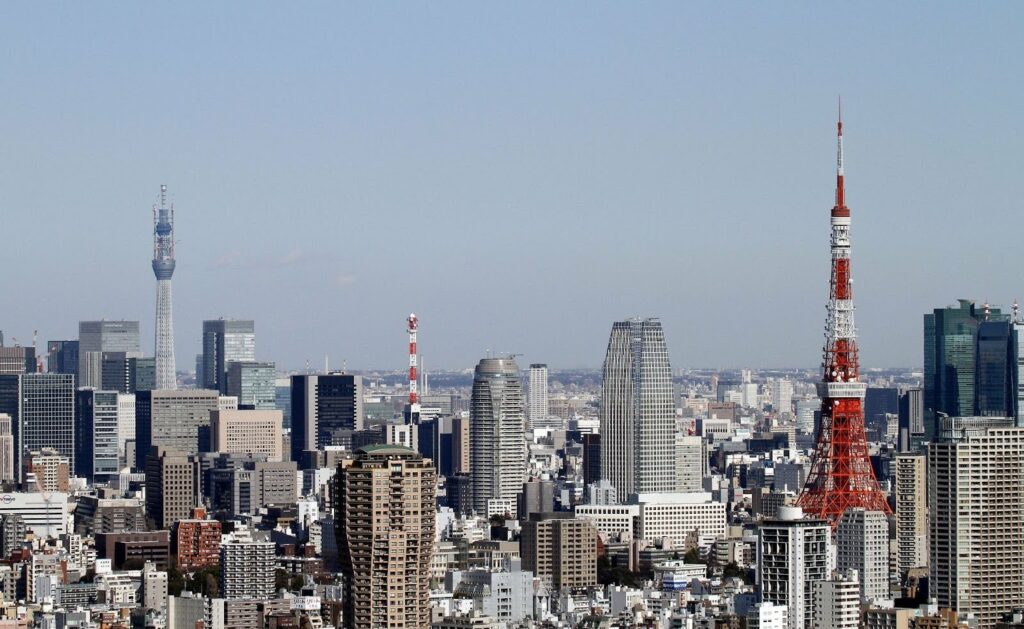
Tokyo Tower is the second tallest building in the city and is 1000 feet high. While it was inspired by the Eiffel Tower in Paris, the Tokyo Tower is slightly taller. This was built in 1958 from steel and extensively repainted every 5 years. The Tokyo Tower is one of the most popular tourist attractions and has observation decks, restaurants, and even a small amusement park.
By far, this is Japan’s most instantly recognizable landmark, dominating Tokyo’s skyline. Over 150 million people have visited the tower since its opening in 1958.
Did you know?
The scrap metal used in constructing the tower came from US tanks damaged in the Korean War.
7. National Diet Building (1937)
Year Built: 1937
Architecture Type: Neo-Baroque Architecture
Still Used?: Yes, houses Japan’s parliament
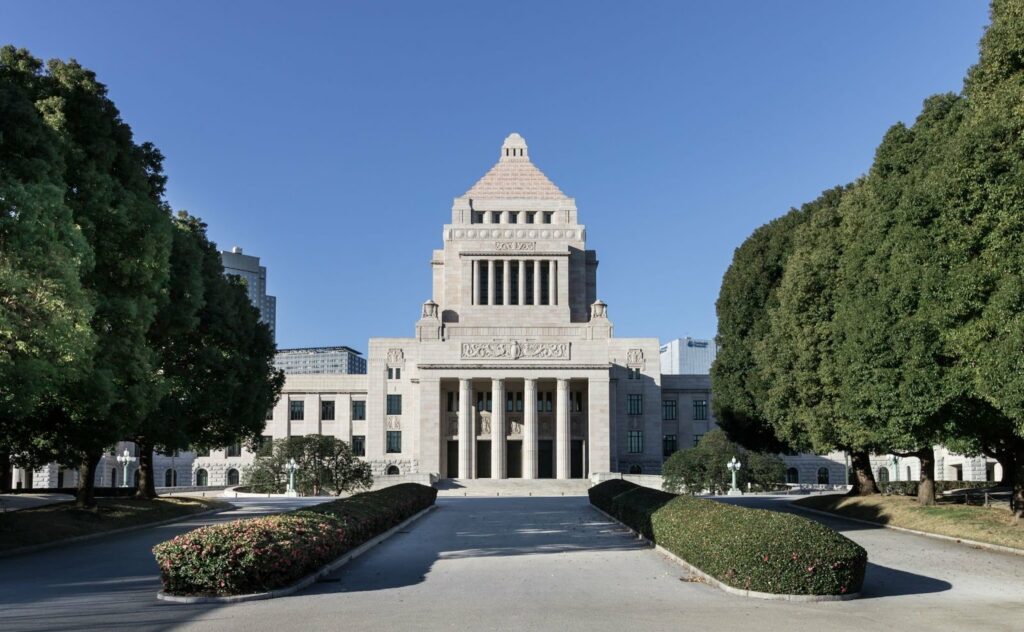
The National Diet Building was and still is Japan’s key government hub. The architectural style of the building is of melding the German Neo-Baroque style with distinct Japanese touches. This place houses the main legislative bodies of Japan, the House of Representatives and the House of Councilors. The building has a symmetrical facade with a central dome standing over 60 meters tall.
This place is open to the public via guided tours to witness Japanese leadership and political history firsthand.
Did you know?
At the center is a large tower that reaches 65.5 meters high, with a bronze statue of a phoenix at the very top.
6. Gokoku-ji Temple (1681)
Year Built: 1681
Architecture Type: Japanese Zen Buddhist Temple
Still Used?: Yes, actively
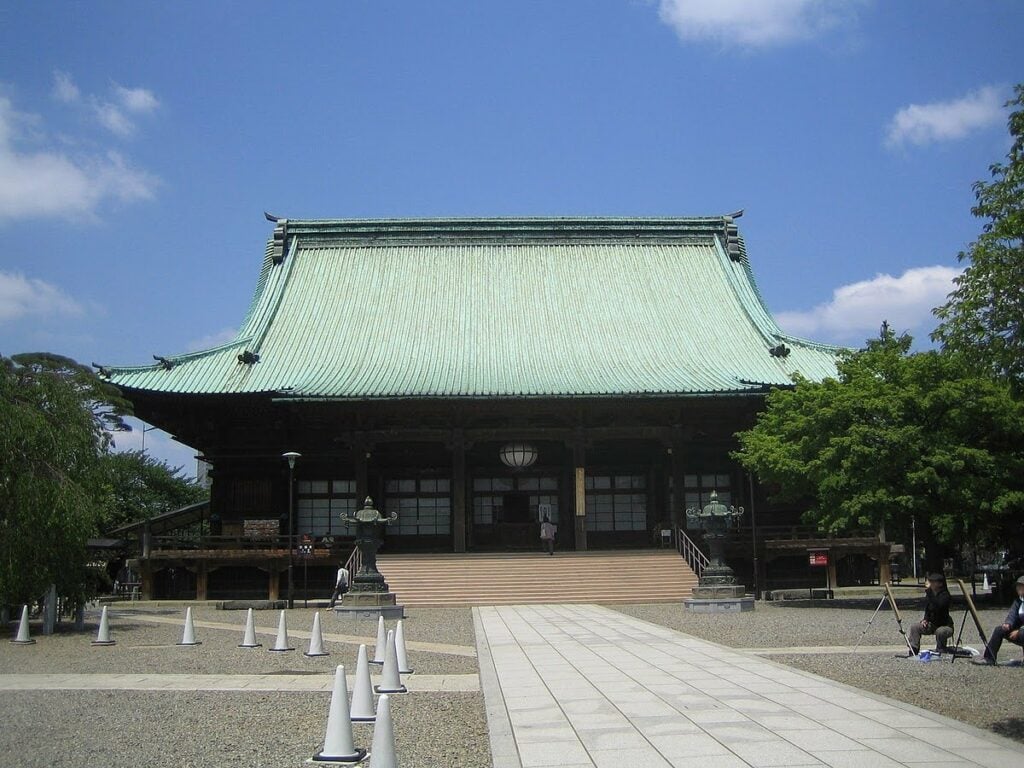
This serene Rinzai Zen Buddhist temple is perfectly preserved in the Bunkyo district. This temple withstood devastating earthquakes and WWII firebombings that destroyed a large part of Tokyo. The Gokuku-ji temple showcases vintage Edo period wooden architecture, which is rarely seen intact today across the city.
The temple has spacious grounds with annex halls surrounding the main two-story wooden temple structure built in 1681. This temple is the perfect place to experience traditional minimalist Japanese architecture.
Did you know?
The name Gokoku-ji means “temple to protect the country.”
5. Fujimi-Yagura Watchtower, Edo Castle (1659)
Year Built: 1659
Architecture Type: Japanese Castle Fortification Tower
Still Used?: Open for public viewing
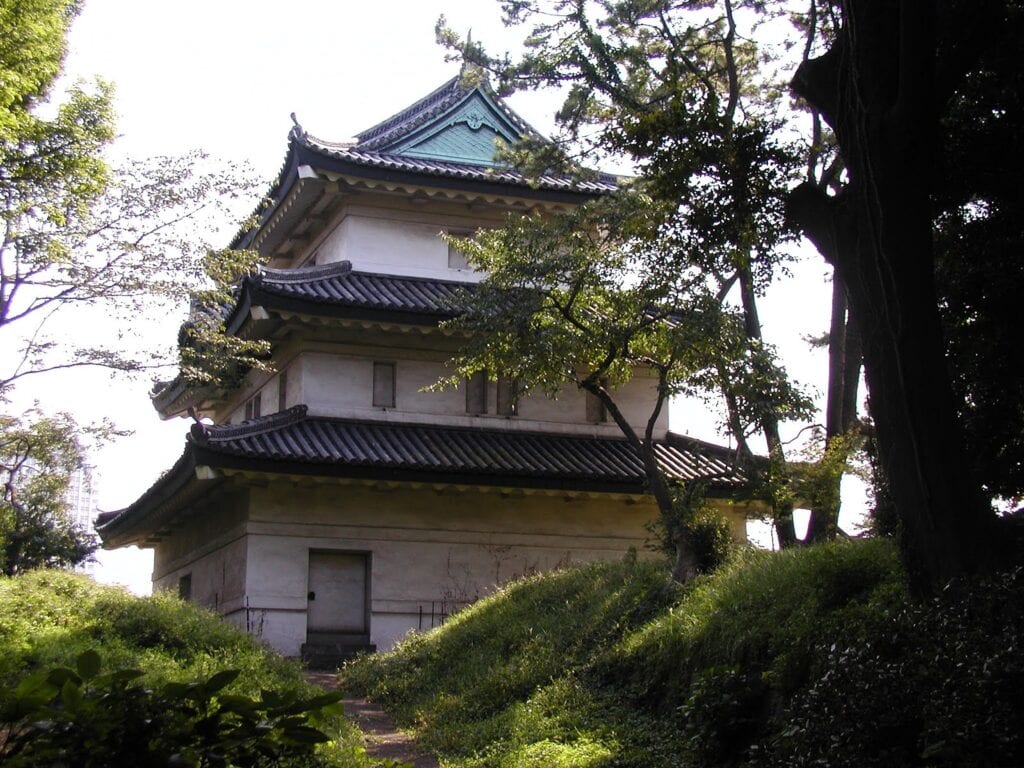
Once the largest castle in the world, the fuji-Yagura watchtower is one of the last remaining structures from the formidable Edo Castle. This castle has distinctive curved white walls and patina roof tiles.
This tower originally allowed views of Mt.Fuji 100 kilometers away, hence the name “Mt. Fuji Viewing Watchtower.” Like most old buildings in Tokyo, this tower has also withstood wars, a massive earthquake, and destructive fires and has been rebuilt and repaired over time.
This tower and the castle are the best examples of Tokyo’s Samurai legacy and strategic fortification history.
Did you know?
The Edo castle was so vast, and the Fujimi-Yagura Watchtower was only a part of it. The castle was so vast that the Tokyo Station and the Marunouchi area were included in the castle grounds once.
4. Toshogu Shrine (1651)
Year Built: 1651
Architecture Type: Japanese Shinto Shrine Complex
Still Used?: Yes, actively
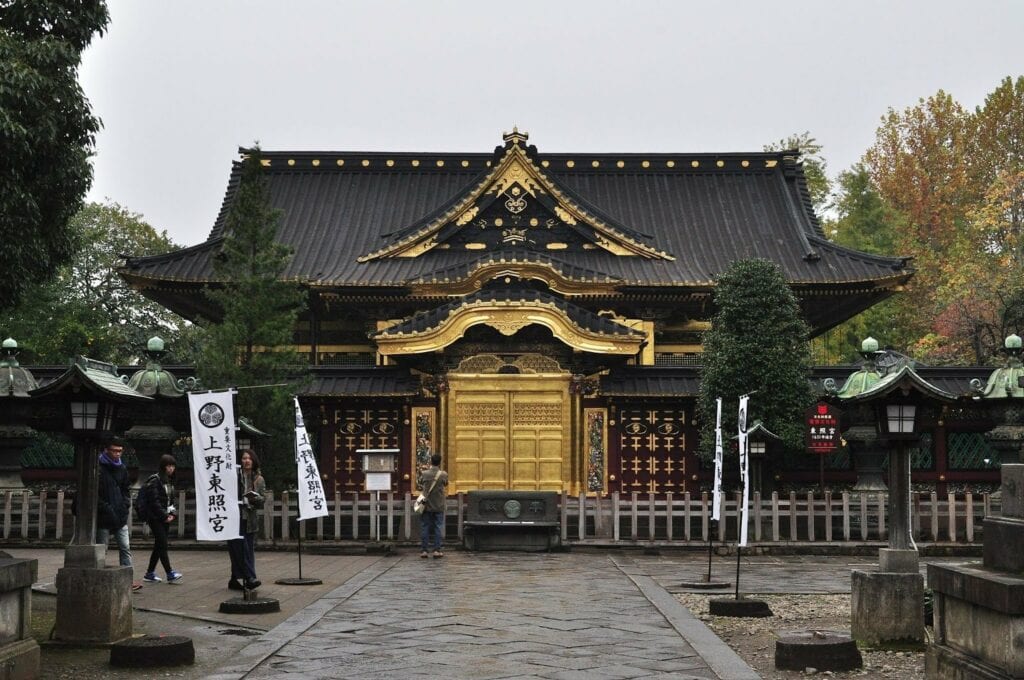
The Toshogu Shrine is dedicated to the revered shogun Tokugawa Ieyasu, who ruled from 1603 to 1605. Originally established in 1627, it was renovated in 1651. This shrine is majorly decorated with gold ornamentation, which was then considered a sign of power and prestige. This place includes the renowned Karamon gate rebuilt in 1651 after a fire damaged the original one.
This shrine is located on the grounds of Ueno Park, near the Hanzo-mon Gate of Ueno Castle. A well-preserved building that shows the lavish architectural history of Japan.
Did you know?
The shrine enshrines 3 key Tokugawa shoguns – founder Ieyasu, along with Yoshimune and Yoshinobu.
3. Asakusa Shrine (1649)
Year Built: 1649
Architecture Type: Japanese Shinto Shrine
Still Used?: Yes, very actively
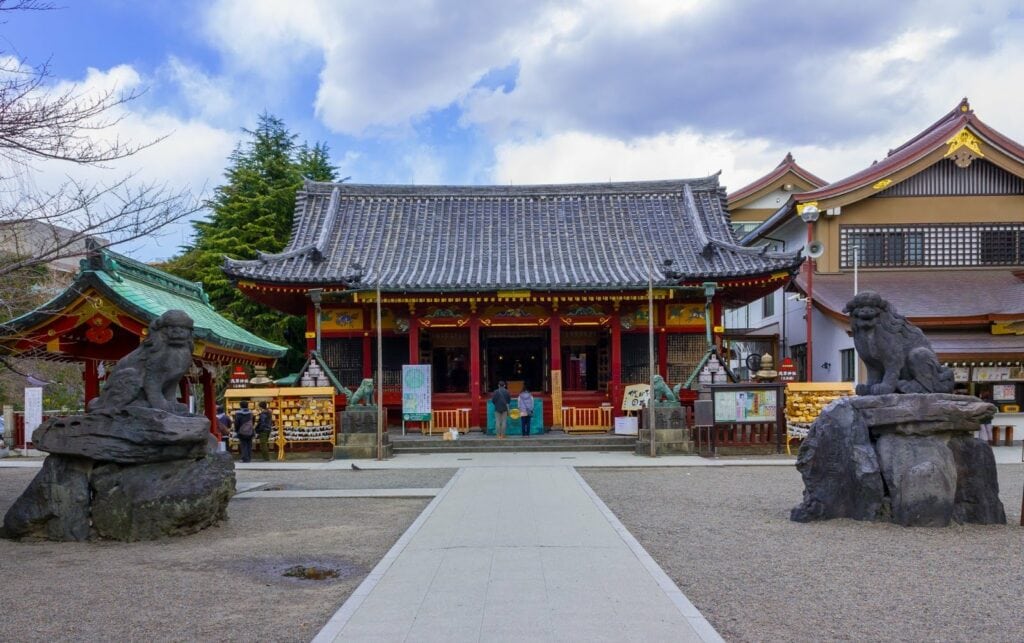
This vibrant red shrine honors the founders of the adjacent Senso-ji Temple. This shrine was built in 1649 as per the orders of the famous shogun Tokugawa Lemitsu. Its main purpose is to honor the three men – Hinokuma brothers and Haji No Nakatomo – who discovered the Kannon statue and founded Sensō-ji Temple in 628 AD.
The Asakusa shrine is the perfect example of the traditional gongen-zukuri architectural style of the early Edo period. The Asakusa Shrine is the main site of the annual high-intensity Sanja Matsuri festival in Tokyo. Like all of the oldest surviving buildings, the Asakusa shrine withstood wars, earthquakes, and time over nearly 4 centuries.
Did you know?
The shrine is located next to Sensō-ji Temple and is part of the larger complex of sacred buildings in Asakusa.
2. Five-storied Pagoda of former Kan’ei-ji Temple (1639)
Year Built: 1639
Architecture Type: Japanese Buddhist Pagoda
Still Used?: No, the exterior can be viewed
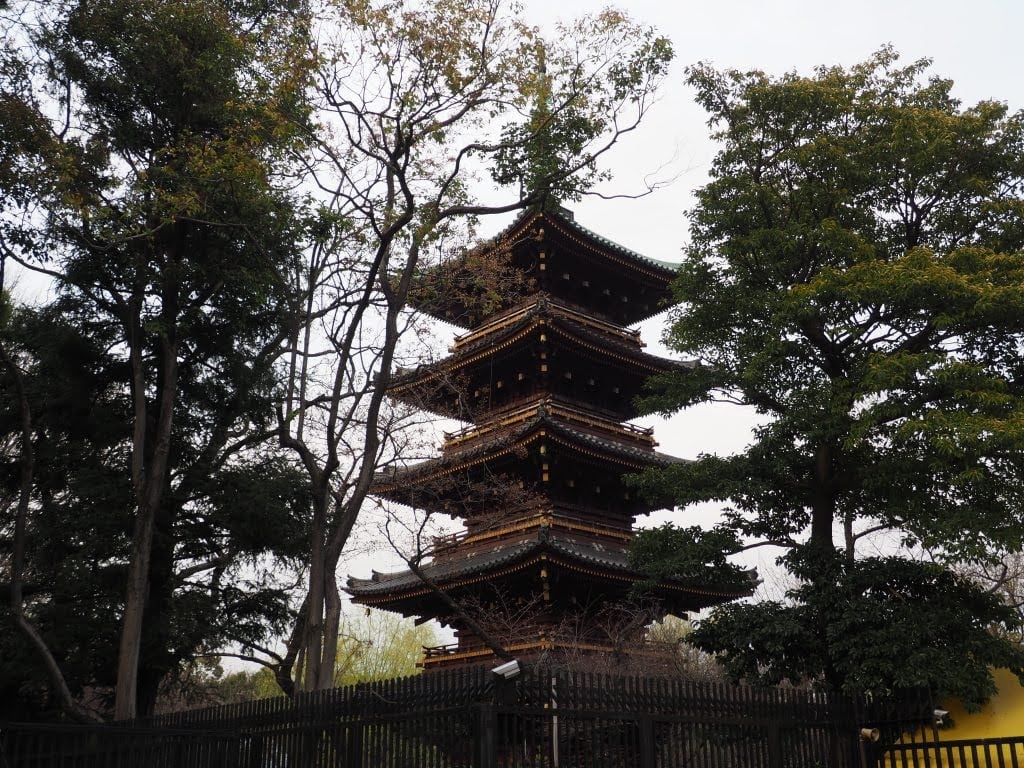
This building is made of brick pagoda coated in red lacquer with touches of gold leaf decorations. This building previously housed precious statues of Four Heavenly Kings guardians. It was rebuilt after a fire in 1639 and then survived a lot of disasters over the centuries.
This Five Storied Pagoda of Formar Kan’ei-ji Temple also contrasts sharply with nearby modern skyscrapers in the Ueno district. Basically, a prime example of Japan’s temple architecture from over 380 years ago.
Did you know?
The temple leaders protected the pagoda’s Buddhist statues during WWII destruction and postwar neglect.
1. Kiyomizu Kannon-do of former Kan’ei-ji Temple (1632)
Year Built: 1632
Architecture Type: Japanese Buddhist Temple
Still Used?: Yes, as a designated historic landmark
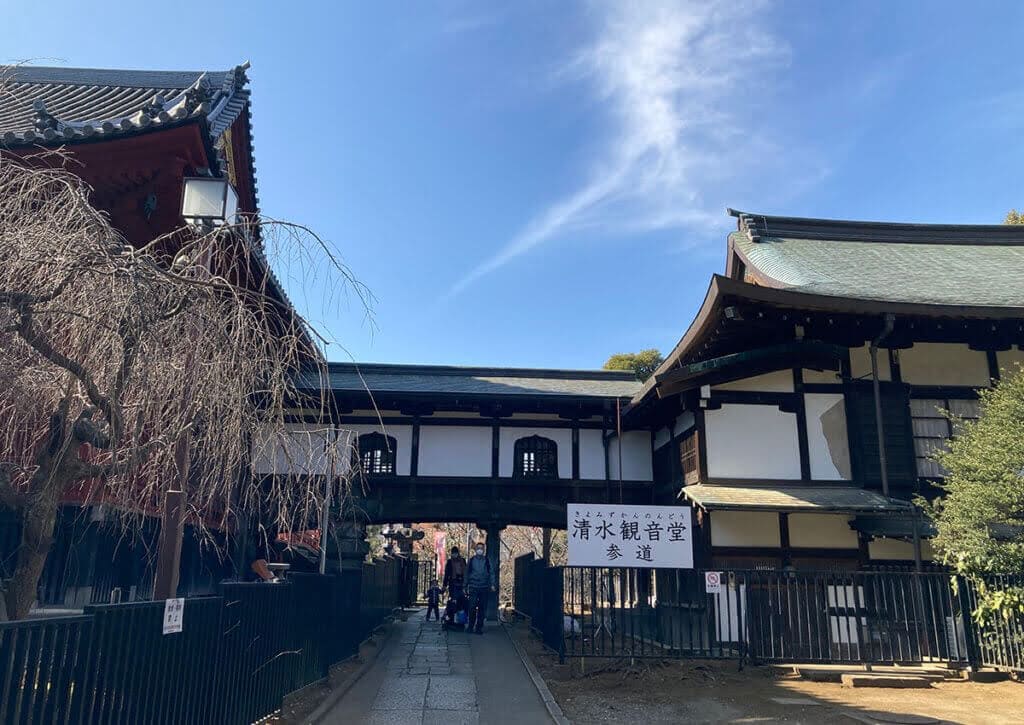
The Kiyomizu Kannon-do of the former Kan’ei-ji Temple, built in 1632, is one of the oldest buildings in Tokyo and was built during the early Edo period. This temple is situated in the Honmaru area of the former grand Kan’ei-ji temple complex in Ueno. it has a unique, distinctive raised wooden platform design overlooking pine trees.
It is a minor remnant of the once massive 68-building Kan’ei-ji temple complex founded in 1625. The building is a smaller replica of the famous Kiyomizu Temple in Kyoto, giving it the nickname “Kiyomizu Kannon-do.”
Did you know?
The temple sells protective charms and amulets, particularly for women hoping to conceive.
Conclusion
Tokyo went through a lot of catastrophic events. Yet, some of the oldest buildings in Tokyo survived such stressful events. The Great Kanto Earthquake of 1923 nearly destroyed the whole city. They also survived the WWII. Tokyo is not inevitable, and it is seen in the very few numbers of old buildings left.
The building, still standing, tells stories about how they managed to survive some of the worst things that can happen. They are also symbols of the history of Japan.
Happy exploring!


